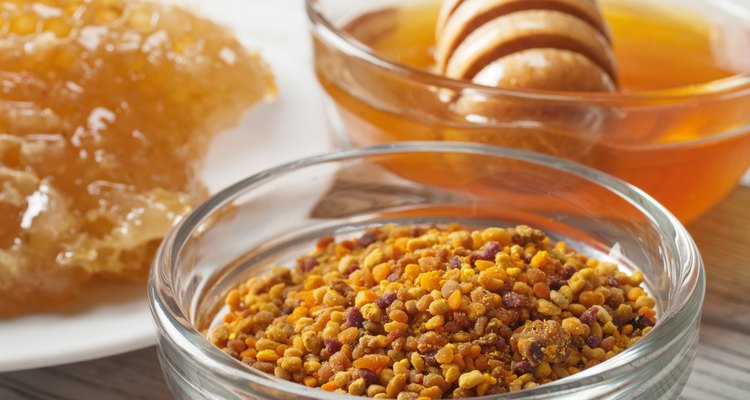
aaboikis/iStock/Getty Images
In the hive, honeybees are constantly at work. Before they can produce honey, bee pollen or royal jelly, the bees must construct a honey comb in which to store these products. With amazing precision, worker bees form six-sided honey comb cells from wax they secrete from glands. When the cells are complete, the bees gather pollen from local blooms and turn it into honey, storing it in the honey comb cells. There are numerous uses for a honey comb, according to Howland Blackiston, author of “Beekeeping for Dummies.”
Honey
The original sweet treat, the first use for a honey comb is the extraction of honey in liquid form or with portions of the honey comb still intact. Called “comb honey,” beekeepers cut small sections of the honey comb, still filled with capped cells, and sell it as a food product. In its raw form, honey has antibacterial properties, according to Blackiston.
Candles
Beeswax candles burn longer and cleaner than candles made from paraffin, according to Blackiston. The beekeeper melts the honey comb, strains out any impurities and pours the wax into molds for resale. Manufacturers or home crafters can re-melt and mold the wax into candles.
Cosmetic
Beeswax from the honey comb is a valuable ingredient in cosmetics, according to Botanical.com. In creams and lotions, beeswax softens skin, forms a layer of protection and increases the effectiveness of sunscreens. Beeswax is an ingredient in lipstick, face and body creams, and makeup.
Leather/Wood Treatment
Honey comb wax is useful in a wide array of household applications. After the honey extraction, the comb may be washed and compressed, or melted and formed into a block for rubbing on leather boots for protection, reports Blackiston. Combine 4 oz. of melted honey comb with 2 tbsp. of melted carnauba wax and 2.5 cups of mineral spirits, stirring well before pouring into a tin. When cool, use the semi-solid product as a furniture wax, rubbing into the wood for a protective sheen.
Around the House
Rub a chunk of washed and compressed honey comb, or a block of beeswax, on drawer rails to ease sliding. A salve made from a melted honey comb will preserve bronze and copper from oxidation, according to the This Old House website. Other uses include conditioning wood cutting boards, smoothing frayed ropes, and loosening rusted nuts and bolts.
Hive Production
Beekeepers can reuse a honey comb to get a jump on the next honey harvest. After opening the top of the capped cells with a heated knife, a honey extractor spins the honey comb to force out the liquid honey. The beekeeper then returns the honey comb frame to the hive. Since the honeybees do not have to start all over rebuilding the honey comb, they get to work filling the cells with honey.
Related Articles

How Long Can Honey Last Without Going ...
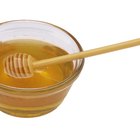
How to Liquify Honey
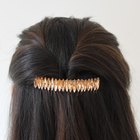
DIY Rhinestone Hair Comb

Hair Tips for Super Dry Hair

No-Tweeze Hair Remover Instructions
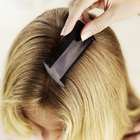
How to Clean a Nit Comb

How to Waterproof Material With Bees Wax

How to Make Extensions Smooth & Silky ...

How to Curl Kanekalon

Hair Growth Products for African ...

I Want to Reuse Hair Extensions: How Do ...

Instructions for How to Use Hard Wax ...

How to Remove Wax From the Face

How to Unclump Eyelashes
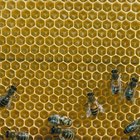
How to Make Beeswax Face Cream

Manuka Honey & Rosacea

How to Care for Metallic Leather

How to Dreadlock a Beard

How to Soften Hair Brush Bristles
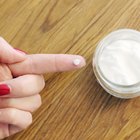
How to Make Natural Face Moisturizer
References
- “Beekeeping for Dummies”; Howland Blackiston; 2009
- Botanical: Beeswax Profile
- This Old House: 10 Uses for Beeswax
Writer Bio
Glenda Taylor is a contractor and a full-time writer specializing in construction writing. She also enjoys writing business and finance, food and drink and pet-related articles. Her education includes marketing and a bachelor's degree in journalism from the University of Kansas.
Photo Credits
aaboikis/iStock/Getty Images